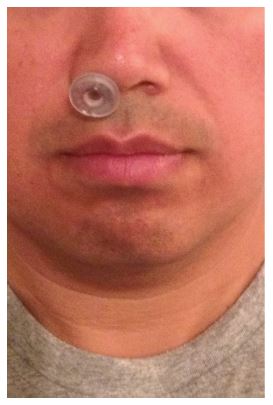Camacho, M., Chang, E.T., Fernandez-Salvador, C. and Capasso, R., 2016. Treatment of snoring with a nasopharyngeal airway tube. Case reports in medicine, 2016.
Objective. To study the feasibility of a standard nasopharyngeal airway tube (NPAT) as treatment for snoring.
Methods. An obese 35-year-old man, who is a chronic, heroic snorer, used NPATs while (1) the patient’s bed partner scored the snoring and (2) the patient recorded himself with the smartphone snoring app “Quit Snoring.” Baseline snoring was 8–10/10 (10 = snoring that could be heard through a closed door and interrupted the bed partner’s sleep to the point where they would sometimes have to sleep separately) and 60–200 snores/hr.
First of all, yes “heroic snorer” is a clinical term. This is the best thing I’ve learned in my sleep apnea journey. Sadly, I am not an heroic snorer, but merely a wimpy snorer.
But, to the main line of the study: yow! An airway tube — sticking a tube down your throat — is a serious intervention. But, yeah, in theory it could work … if the patient can tolerate it. I think in hospital situations patients do so because they’re sedated or anesthetized, or otherwise not trying to rest.
Sure enough, in this case study the patient could not tolerate the airway tube for more than a few hours of sleeping. “[T]he utility of these tubes for snoring abatement is met with challenges.”
Another quote from the study: “Snoring is a common problem throughout the United States and worldwide, with literature reporting that 5–86% of men and 2–47% of women snore [1, 2].” Those are extremely wide ranges. The low ends are from this and high ends from this, both fairly dated. For what it’s worth, about one-third of French adult males habitually snore, according to this study, and here’s relatively recent work indicating half of Americans snore.


